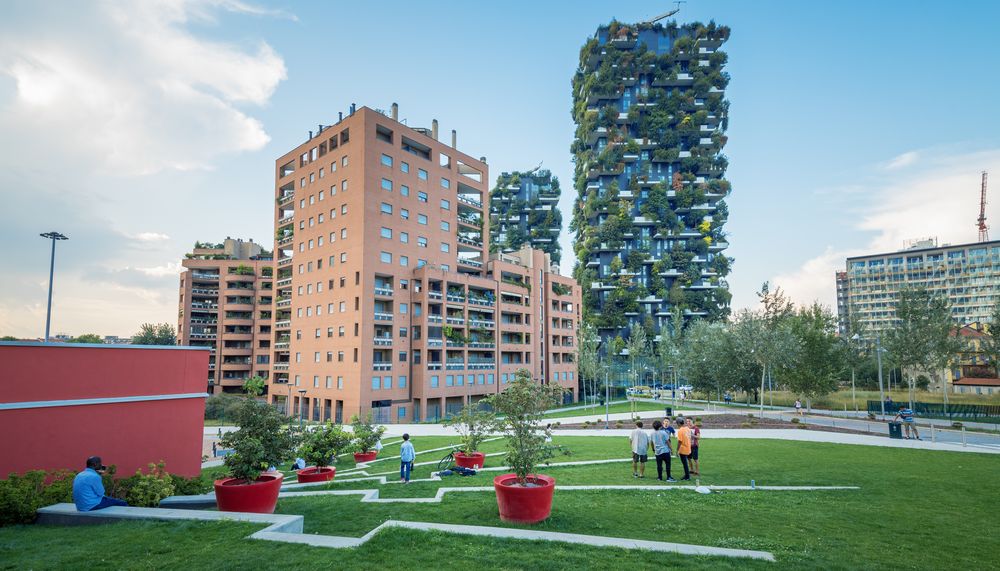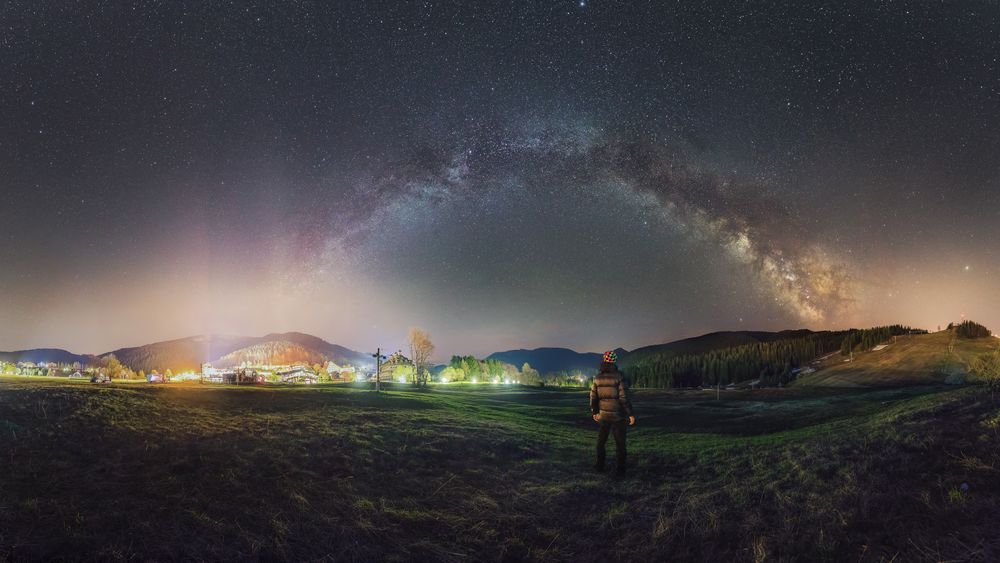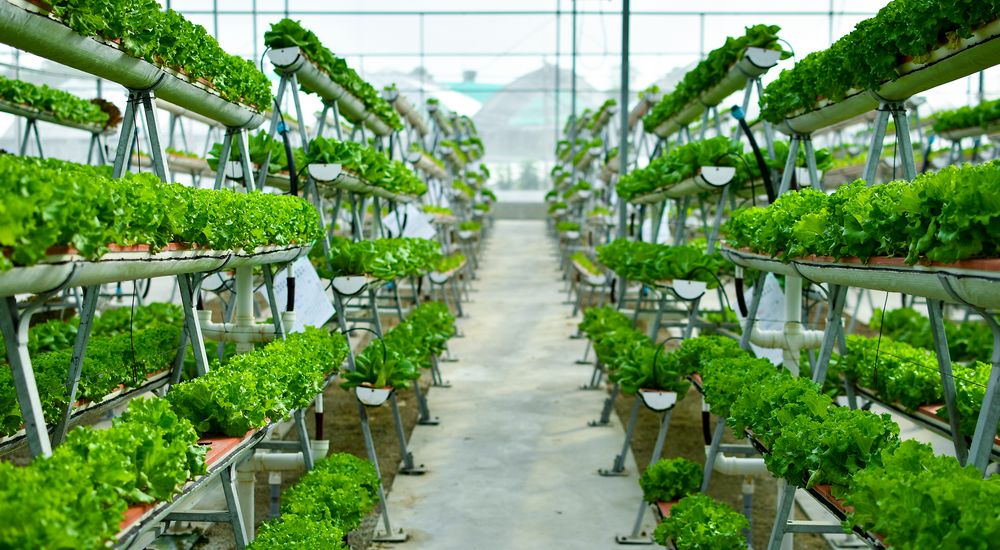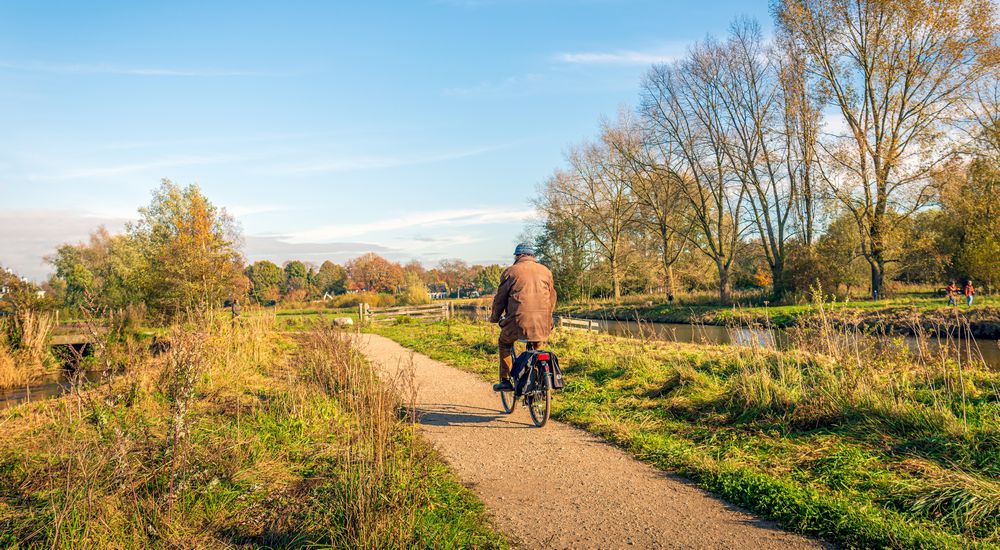Why build green cities: 13 benefits of sustainable town planning
Thanks to its multifactorial approach, green town planning offers concrete advantages for building the city of the future.

By 2050, 70% of the world’s population will live in urban areas. To meet this challenge, cities must now be designed from a sustainable development perspective to solve a host of problems, including pollution, heat pockets, stress, etc. using a multifactorial approach based on economic, social, technical and ecological inputs. Sustainable (or green) town planning provides meaningful advantages for the cities of the future. Here are 13 sustainable town planning benefits you should know!

Porta Nuova, Milan
© Photo credit: Bruchez Benoît / Adobe Stock
1. Reduction of population stress
Noise, traffic jams, social density, frantic life rhythms, densely-packed public transport, etc. Every day, people who live in towns are confronted with stressful situations which can cause mental and physical health problems. When a city is primarily functional, it often ignores its citizens’ fundamental psychological needs. In the sustainable town planning concept, vital needs like links with other residents and a feeling of security take the place they merit.
2. Cleaner air…
Pollution accumulates and the planet suffocates, generating pathologies in densely populated zones like asthma, chronic coughs and even cancer. As trees can absorb up to 5.4 metric tonnes of CO2 and 20kg of dust a year, public authorities not only have to plan to reduce their greenhouse gas outputs, they must also decide to include plants in their urban developments.
3. …and darker nights!

© Photo credit: majochudy / Adobe Stock
For ecological and/or economic reasons some public authorities have already started to transform night-time lighting. Often excessive, inappropriate and hugely power-consuming, public lighting disrupts the life cycle of flora and fauna (including human beings!), causing further disorders. With the energy crisis public lighting is at the center of discussions about the environment and fortunately, solutions are ready and waiting!
4. Teaching urban biodiversity
By creating vegetalized spaces which encourage the return of biodiversity, green town planning becomes a teaching method. Insect hotels and other equipment are ways of making residents of all ages aware of the interactions between plants and animals and of the importance of environmental protection. This objective goes hand in hand with the need to vegetalize school schoolyards and surroundings to contribute to the education of the students.
5. Increase in the value of real estate
Demand rises for homes near parks and gardens. According to Unep, the presence of a green space under 100 meters from a home can boost its value by €10,000 and this trend has continued even after the Covid-19 crisis and lockdowns. Prices for energy-efficient homes have also risen during this period.
6. Better run-off water management

© Photo credit: juliasudnitskaya / Adobe Stock
The low absorption capacity of mains drainage, doubled with massive concretization of grounds, prevent correct drainage of run-off water into the ground. Upstream, the flow weakens the grounds and pollutes the rain water which picks up and carries wastes, requiring more costly treatments downstream. Sustainable town planning, incorporating plants, makes it possible to manage this water more efficiently and effectively.
7. Favoring friendliness
The creation of welcoming and well-designed green spaces stimulates the local life of a district by providing places where local inhabitants can stroll, meet up, chat and make friends. Here sustainable town planning has a vital role to play in creating a true community in a world become very individualistic, and makes it possible to meet the need for a feeling of belonging and fighting loneliness. Check out our tips on how to create friendly green spaces.
8. Favoring fitness
In addition to its positive action on air pollution, sustainable town planning also makes it possible to improve physical health by transforming cities into sports grounds. To do this, the active design concept is very useful and we have many examples of urban developments that support go-it-alone sport! Plants and places to socialize also effectively reduce stress and protect mental health.
9. Favoring locally-grown food

© Photo credit: mustbeyou / Adobe Stock
It is difficult to grow your own food without a kitchen garden! Sustainable town planning can combine the benefits of green spaces with those of vegetable gardens. Any free space can potentially be used for urban agriculture. Flower-beds can be used to grow vegetables in city centers. Check out all the different forms urban agriculture can take.
10. Supporting inclusion
Sustainable town planning can also become a creator of employment and social links by permitting people excluded from normal social bonding to find inclusion through shared, paid jobs in green spaces. Here is a list of some successful examples of insertion garden programs including post-prison inclusion and valorization of the homeless and the handicapped.
11. Keeping cool
Heat waves are increasingly frequent, especially in cities where buildings block drafts. Thanks to new energy systems, the development of green spaces and a stop to “all concrete architecture”, sustainable town planning brings several effective solutions to heat pockets.
12. Encouraging light transport and mobility

© Photo credit: Ruud Morijn / Adobe Stock
To restore calm and create ecological corridors along which fauna can move in safety, green town planning reconsiders road installations and reinvents the offer of alternative transport with more attractive cycle tracks, pedestrian paths and the re-use of car parks to prepare cities for the post-petroleum era and facilitate daily travel. Here are some ideas for reinventing transport networks.
13. Extending space without building on natural grounds
With the appearance of roof-terraces and vegetalized frontages, the rehabilitation of derelict land and underground spaces, sustainable town planning makes it possible to optimize available space downtown to incorporate more nature. This is essential as cities will have to become denser to slow urban sprawl which is swallowing up natural spaces
With these benefits, sustainable town planning promises a better future for all. But the transition towards greener cities requires deals between often contrary interests! Come to Paysalia to discuss the obstacles you will meet in your efforts to build a sustainable city with experts – and hopefully find solutions.

